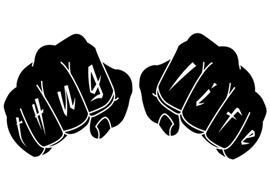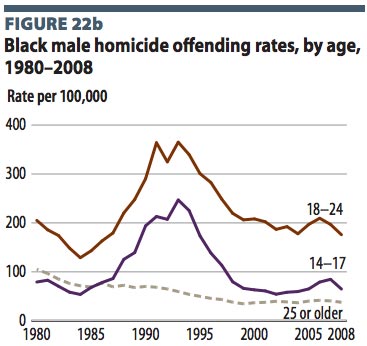
August 26, 2015

Source: Shutterstock
Two of the better movies of 2015 are weirdly similar musical biopics about bands from Los Angeles” south suburbs. Last June’s Love & Mercy profiled Brian Wilson of the Beach Boys, who came from Hawthorne, Calif., while gangsta rappers N.W.A, who helped spread the South Central L.A. crack-dealer lifestyle nationally in the late 1980s, are lauded in the overly long but still entertaining Straight Outta Compton. Paul Giamatti even plays virtually identical roles in each movie as the crooked Jewish manager.
While the exquisite Love & Mercy topped out at $12 million in box office, Straight Outta Compton is already up to $111 million and will surpass the Johnny Cash movie I Walk the Line to become the highest-grossing musical biopic ever.
The Academy had better hope that some other Oscar candidates emerge in the fall to divert attention away from what so far looks like a battle for Best Picture between the superb white rock movie and the not-bad black rap movie.
Granted, comparing Straight Outta Compton to Love & Mercy on aesthetics is like contrasting “F*** tha Police“ and “No Vaseline“ to “God Only Knows“ and “Wouldn”t It Be Nice.” But the hip-hop film, directed by veteran black hired gun F. Gary Gray (who also helmed Ice Cube’s Friday and Mark Wahlberg’s The Italian Job), is competent enough to trigger feelings of entitlement. As last year’s black complaints about Selma being handed one only Oscar suggested, when the Academy gave the Best Picture award a couple of years ago to 12 Years a Slave, it didn”t succeed in assuaging black demands for a few years as hoped. Instead, 12 Years“ Oscar seemed to convince racial spokespersons that blacks deserve to win Best Picture every year.
Because black.
The expertise of both the Beach Boys and N.W.A at mythologizing extended to their suburban hometowns, which lie southeast of Los Angeles International Airport. The Wilson brothers grew up five miles inland from LAX in Hawthorne, while Compton, birthplace of Dr. Dre and Eazy-E, is eight miles farther east.
In the Beach Boys” songs, their nondescript hometown seemed a paradise, while N.W.A glamorized the physically similar Compton as the capital of mindless black-on-black violence. In 1988, Ice Cube (a recent graduate of Taft H.S. in Woodland Hills) boasted:
When I”m called off, I got a sawed-off
Squeeze the trigger, and bodies are hauled off….
I”m coming straight outta Compton
In truth, both Hawthorne and Compton were modest but pleasant postwar developments of compact single-family homes. Although Brian Wilson’s “In My Room“ is an eerily prophetic ode to the luxury of privacy, the three Wilson brothers had to share a bedroom. Compton was once a nice enough place that George and Barbara Bush chose to live there with little George W. in 1949.
Of course, the big difference was that in the 1960 Census, Hawthorne was only one percent nonwhite, while Compton was already 40 percent nonwhite. (Compton has had a black mayor since 1969.) Today, though, the two legendary suburbs are similar: Both have Hispanic majorities under the thumbs of scandal-plagued black politicians.
With its middle-class housing, sea-tempered climate (the average high on Aug. 26 is 84°F, humidity is mild, and there are no mosquitoes), and proximity to good factory jobs during the 1950″90 Cold War aerospace boom, Compton should have continued to be what it had been in the early 1950s: an idyllic suburb for upwardly mobile black homeowners.
But through sheer knuckleheadedness, local youths managed to make Compton world-famous for blacks killing blacks in moronic disputes. The fate of Compton illustrates my old saying that the chief problem with being poor in modern America is that you can”t afford to get away from other poor people”even, as in Compton, when they weren”t all that poor.

N.W.A’s malignant influence on American social history shouldn”t be forgotten. The national black youth homicide rate had dropped to a moderate level in the mid-1980s, before surging to apocalyptic heights during the 1990″94 crack wars. A 2011 Obama administration report showed that homicide offending rates for blacks 14 to 24 roughly tripled from 1984 to 1993 (see Figure 22b), while murder rates steadily declined for blacks 25 and older, who, perhaps not coincidentally, were too old to care much about new rappers like N.W.A.
When N.W.A released their first blockbuster gangsta-rap album, Straight Outta Compton, in August 1988, crack was still more common on the periphery of the country than in the heartland. For example, in Chicago in October 1988, I let three undercover cops peer out my apartment window to spy on Eddie the cocaine dealer across the street as he hit the pipe with his customers. When I asked the cops if Eddie was smoking this new drug that was in the news, crack, they replied, “He’s freebasing. There’s no crack in Chicago.”
Or at least there wasn”t all that much crack yet.
Crack dealing and gangsta rap enjoyed a symbiotic relationship as groups like N.W.A egged on black youths to murder one another in turf wars. West Coast hip-hop functioned as a mind virus infecting impressionable young brains across the land with virulent memes about how a real man reacts to life’s frustrations: with homicidal savagery.
Today, Ice Cube stars in family comedy movies, and Dr. Dre and Jimmy Iovine sold their Beats by Dre headphone company to Apple for $3 billion.
N.W.A wasn”t the first time the American media promoted criminality. In 1882, Oscar Wilde was lecturing in St. Joseph, Mo., two weeks after the assassination of the much-publicized Jesse James. Wilde mused after observing tourists dismantling the train robber’s house for relics, “Americans are certainly great hero-worshippers, and always take heroes from the criminal classes.”
Speaking of the criminal classes, Compton’s own Suge Knight, Dr. Dre’s business partner from 1991 to “96, was scheduled to film a cameo in Straight Outta Compton. But Knight got into an argument on the movie set with two guys and ran them over with his truck. The 50-year-old entrepreneur is currently in jail awaiting trial for murder.